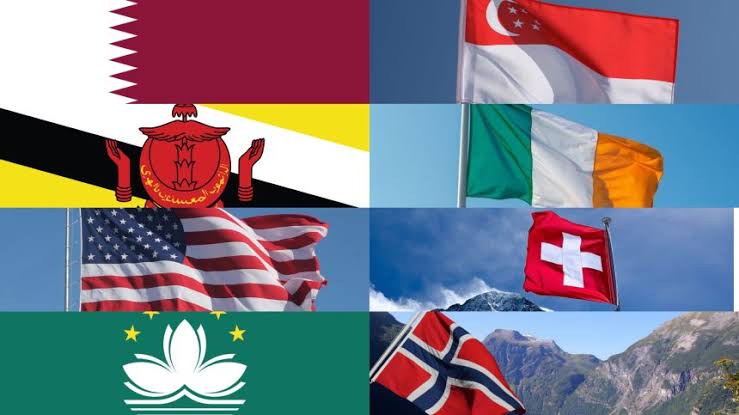When people consider the richest nations in the world, what comes to mind? And when people consider the smallest nations on earth, what comes to mind? It would certainly surprise a lot of people to learn that many of the richest countries on Earth are also among the smallest.Rich and small nations such as Singapore, San Marino, Luxembourg, and Switzerland gain by having advanced financial industries and tax policies that draw in international capital, skilled labor, and substantial bank deposits. Some have significant hydrocarbon or other profitable natural resource reserves, such as Qatar and the United Arab Emirates. Glistening casinos and throngs of visitors are beneficial to business as well. Macao, Asia’s gambling mecca, is still among the wealthiest governments in the world despite enduring nearly three years of sporadic lockdowns and travel restrictions due to the virus.However, what exactly does it mean to call a nation “rich,” particularly in light of the widening gap in income between the really wealthy and the rest of the population? Although a country’s gross domestic product (GDP) represents the total value of its products and services generated, a more accurate measure of a country’s relative wealth is its population divided by the number of full-time inhabitants. It thus becomes evident why “rich” sometimes equates with “small”: the economies of these nations are disproportionately huge in comparison to their small populations.
These Are The Top 10 Richest Countries In The World
10. United States 🇺🇲 Have we mentioned that the richest nations are also the smallest? Of course, that is untrue in the case of the United States, which made its debut in the top 10 list in 2020 after spending the better part of the previous 20 years hovering just outside of tenth place.America’s rise into and retention in the top 10 can be partly attributed to declining energy costs, as well as state expenditure spurred by the epidemic and other economic stimulus programs. Petroleum-based economies such as Qatar, Norway, and the United Arab Emirates saw a decline in their ranks due to falling energy prices, and Brunei was notably excluded from the top 10.Meanwhile, there was a notable increase in aggregate demand due to the government’s massive spending on social programs. Because of this, the US experienced its shortest recession on record in the beginning of 2020—just two months. Since the pandemic began, the American labor market has also rebounded, despite the fact that workers’ earnings have frequently been reduced by historically high inflation.9. Norway 🇳🇴
Have we mentioned that the richest nations are also the smallest? Of course, that is untrue in the case of the United States, which made its debut in the top 10 list in 2020 after spending the better part of the previous 20 years hovering just outside of tenth place.America’s rise into and retention in the top 10 can be partly attributed to declining energy costs, as well as state expenditure spurred by the epidemic and other economic stimulus programs. Petroleum-based economies such as Qatar, Norway, and the United Arab Emirates saw a decline in their ranks due to falling energy prices, and Brunei was notably excluded from the top 10.Meanwhile, there was a notable increase in aggregate demand due to the government’s massive spending on social programs. Because of this, the US experienced its shortest recession on record in the beginning of 2020—just two months. Since the pandemic began, the American labor market has also rebounded, despite the fact that workers’ earnings have frequently been reduced by historically high inflation.9. Norway 🇳🇴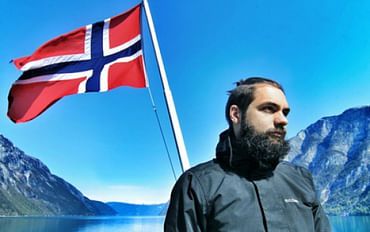 Norway has relied heavily on oil as its economic engine since the late 1960s, when significant offshore reserves were discovered. Being the leading petroleum producer in Western Europe, the nation has profited from rising prices for many years.Until it didn’t: the krone plummeted as a result of the global pandemic that struck at the start of 2020, which also caused a plunge in prices. The GDP of Norway decreased by 6.3% in the second quarter of that year, marking the largest loss in fifty years and maybe the largest since World War Two.Does that imply that Norwegians’ level of wealth decreased dramatically from before the pandemic? Without a doubt. Following the initial shock, the economy progressively recovered and reduced its losses.Furthermore, Norwegians may always rely on their $1.3 trillion sovereign wealth fund, the largest in the world, for assistance with any unforeseen economic issues. Furthermore, Norway’s high per capita GDP estimates represent the ordinary person’s economic well-being fairly well, in contrast to many other wealthy countries. The nation has one of the narrowest disparities in income inequality globally.8. San Marino🇸🇲
Norway has relied heavily on oil as its economic engine since the late 1960s, when significant offshore reserves were discovered. Being the leading petroleum producer in Western Europe, the nation has profited from rising prices for many years.Until it didn’t: the krone plummeted as a result of the global pandemic that struck at the start of 2020, which also caused a plunge in prices. The GDP of Norway decreased by 6.3% in the second quarter of that year, marking the largest loss in fifty years and maybe the largest since World War Two.Does that imply that Norwegians’ level of wealth decreased dramatically from before the pandemic? Without a doubt. Following the initial shock, the economy progressively recovered and reduced its losses.Furthermore, Norwegians may always rely on their $1.3 trillion sovereign wealth fund, the largest in the world, for assistance with any unforeseen economic issues. Furthermore, Norway’s high per capita GDP estimates represent the ordinary person’s economic well-being fairly well, in contrast to many other wealthy countries. The nation has one of the narrowest disparities in income inequality globally.8. San Marino🇸🇲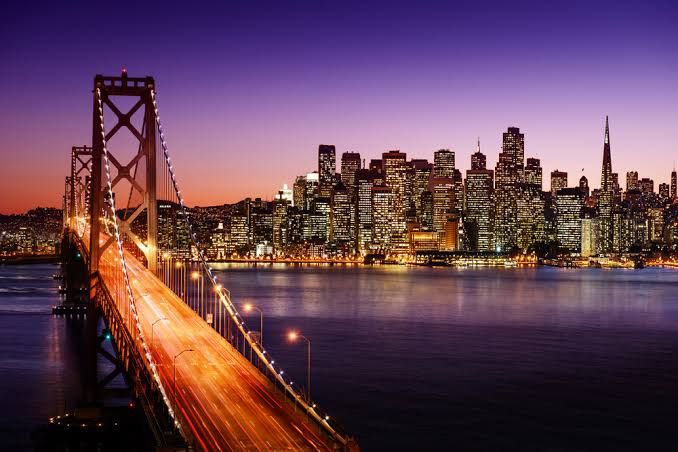 Little San Marino is the fifth-smallest country on the map and the oldest republic in Europe. Despite having just 34,000 residents, it has some of the richest populations worldwide. The extremely low income tax rate—roughly one-third of the EU average—helps. However, San Marino is making efforts to align its fiscal rules and regulations with both international standards and those of the European Union (EU).The little country demonstrated incredible fortitude both during and after the epidemic in the face of severe financial constraints and the energy crisis, with its manufacturing and tourism sectors seeing particularly robust growth.7. United Arab Emirates 🇦🇪
Little San Marino is the fifth-smallest country on the map and the oldest republic in Europe. Despite having just 34,000 residents, it has some of the richest populations worldwide. The extremely low income tax rate—roughly one-third of the EU average—helps. However, San Marino is making efforts to align its fiscal rules and regulations with both international standards and those of the European Union (EU).The little country demonstrated incredible fortitude both during and after the epidemic in the face of severe financial constraints and the energy crisis, with its manufacturing and tourism sectors seeing particularly robust growth.7. United Arab Emirates 🇦🇪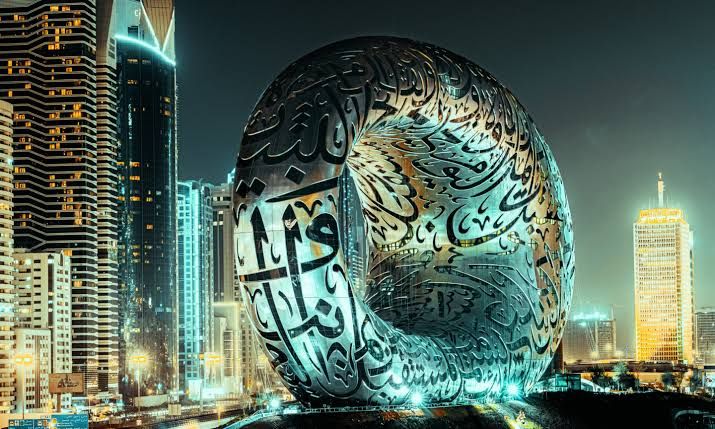 Pearl commerce, fishing, and agriculture used to be this Persian Gulf nation’s three main economic sectors. Everything changed in the 1950s when oil was discovered. The extremely cosmopolitan populace of the United Arab Emirates (UAE) is wealthy today. Just 20% of the population is native to the nation; workers are drawn here from all over the world by tax-free earnings and year-round sunlight, while traditional Islamic architecture coexists with opulent retail malls.6. Switzerland 🇨🇭
Pearl commerce, fishing, and agriculture used to be this Persian Gulf nation’s three main economic sectors. Everything changed in the 1950s when oil was discovered. The extremely cosmopolitan populace of the United Arab Emirates (UAE) is wealthy today. Just 20% of the population is native to the nation; workers are drawn here from all over the world by tax-free earnings and year-round sunlight, while traditional Islamic architecture coexists with opulent retail malls.6. Switzerland 🇨🇭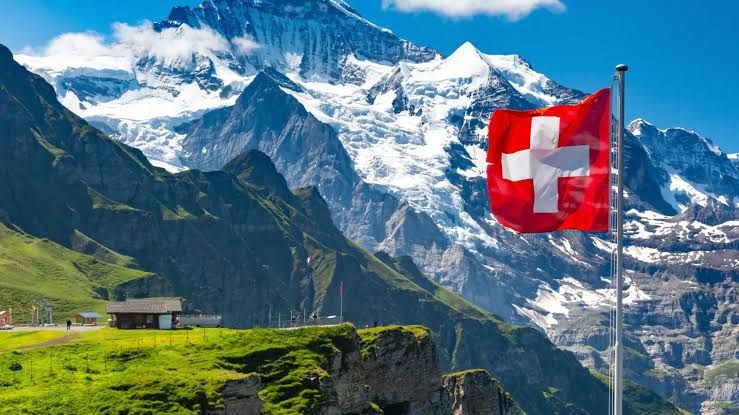 Additionally, the economy of the UAE is diversifying more and more. Major industries outside of the hydrocarbon industry that has historically dominated the economy are tourism, construction, trade, and banking. This is not to argue that the pandemic and the ensuing decline in oil prices did not have an influence on the United Arab Emirates; quite the contrary. As unbelievable as it may sound, the United Arab Emirates momentarily disappeared from the IMF’s list of the world’s richest nations for the first time in many years. However, fossil fuels are still in vogue: the United Arab Emirates promptly reclaimed its traditional ranking among the world’s top 10 richest nations as soon as energy prices began to rise5. Macao SAR
Additionally, the economy of the UAE is diversifying more and more. Major industries outside of the hydrocarbon industry that has historically dominated the economy are tourism, construction, trade, and banking. This is not to argue that the pandemic and the ensuing decline in oil prices did not have an influence on the United Arab Emirates; quite the contrary. As unbelievable as it may sound, the United Arab Emirates momentarily disappeared from the IMF’s list of the world’s richest nations for the first time in many years. However, fossil fuels are still in vogue: the United Arab Emirates promptly reclaimed its traditional ranking among the world’s top 10 richest nations as soon as energy prices began to rise5. Macao SAR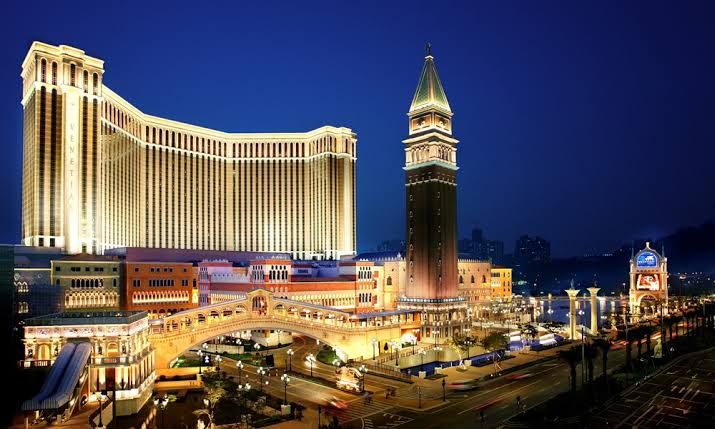 A few years back, a lot of people were placing bets that Asia’s version of Las Vegas will soon overtake all other countries in terms of wealth. After the gambling sector was liberalized in 2001 in this former Portuguese Empire territory, the People’s Republic of China’s special administrative region has witnessed an incredible increase in riches. Nestled just south of Hong Kong, this little peninsula became a money-making engine with over 40 casinos spanning a region of around 30 square kilometers and a population of about 700,000.That was, that is, until the machine began to lose money instead of making it. Travel throughout the world ceased when Covid hit, and Macao briefly dropped out of the list of the ten richest countries. Macao is gradually getting back to its regular schedule today. Even still, the per-capita purchasing power is still much lower than it was prior to the global health emergency—it was over $125,000 in 2019 and is currently down by over $25,000.4. Qatar
A few years back, a lot of people were placing bets that Asia’s version of Las Vegas will soon overtake all other countries in terms of wealth. After the gambling sector was liberalized in 2001 in this former Portuguese Empire territory, the People’s Republic of China’s special administrative region has witnessed an incredible increase in riches. Nestled just south of Hong Kong, this little peninsula became a money-making engine with over 40 casinos spanning a region of around 30 square kilometers and a population of about 700,000.That was, that is, until the machine began to lose money instead of making it. Travel throughout the world ceased when Covid hit, and Macao briefly dropped out of the list of the ten richest countries. Macao is gradually getting back to its regular schedule today. Even still, the per-capita purchasing power is still much lower than it was prior to the global health emergency—it was over $125,000 in 2019 and is currently down by over $25,000.4. Qatar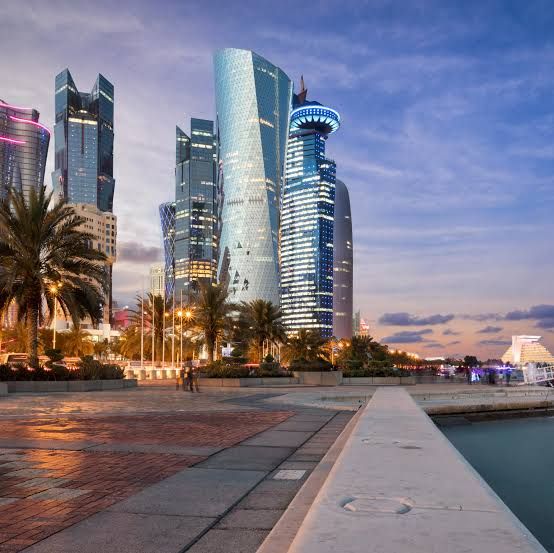 Oil prices have generally decreased since the middle of the 2010s, except the recent rebound. A Qatari citizen’s per-capita GDP was above $143,222 in 2014; a year later, it sharply declined and stayed below $100,000 for the following five years. That amount has, however, progressively increased, rising by roughly $10,000 annually.Nevertheless, Qatar’s 2.7 million people and abundant oil, gas, and petrochemical reserves allow this marvel of modern architecture, opulent retail centers, and exquisite food to maintain its position as the richest country in the world for two decades.All wealthy nations do not, however, exist without issues. In the early months of the epidemic, Covid-19 spread quickly among low-income migrant laborers living in cramped quarters, leading to one of the highest percentages of positive cases in the region, despite the fact that only 12% of the population is Qatari. Then, when energy costs declined, so did revenues for the public and private sectors. Qatar’s export-driven economy was negatively impacted by the interruption of international trade resulting from the conflict in Ukraine.3. Singapore
Oil prices have generally decreased since the middle of the 2010s, except the recent rebound. A Qatari citizen’s per-capita GDP was above $143,222 in 2014; a year later, it sharply declined and stayed below $100,000 for the following five years. That amount has, however, progressively increased, rising by roughly $10,000 annually.Nevertheless, Qatar’s 2.7 million people and abundant oil, gas, and petrochemical reserves allow this marvel of modern architecture, opulent retail centers, and exquisite food to maintain its position as the richest country in the world for two decades.All wealthy nations do not, however, exist without issues. In the early months of the epidemic, Covid-19 spread quickly among low-income migrant laborers living in cramped quarters, leading to one of the highest percentages of positive cases in the region, despite the fact that only 12% of the population is Qatari. Then, when energy costs declined, so did revenues for the public and private sectors. Qatar’s export-driven economy was negatively impacted by the interruption of international trade resulting from the conflict in Ukraine.3. Singapore With an estimated net worth of $15.6 billion, Li Xiting, the founder of Mindray, a company that makes medical equipment, is the richest person in Singapore. Robert and Philip Ng, brothers and real estate developers, are ranked second and third, respectively, after Goh Cheng Liang of Wuthelam Holdings, a paint and coatings manufacturer. Eduardo Saverin, the co-founder of Facebook, comes in at number four with assets of roughly $9.6 billion (albeit he held the top slot for a long time). In 2011, Saverin departed the United States with 53 million shares of the firm and moved to the island nation permanently. Not only is Singapore home to several natural gates and urban attractions, but Saverin also chose it because it is a wealthy fiscal haven with tax-free income and capital gains.However, how did Singapore manage to draw in so many wealthy people? Half of the people living in the city-state were illiterate in 1965, the year it gained its independence. Singapore, which has almost no natural resources, has become one of the world’s most business-friendly destinations by hard work and astute policies. Currently, 98% of Singapore’s adult population is literate, and the country is a booming center for trade, manufacturing, and finance.2. Ireland
With an estimated net worth of $15.6 billion, Li Xiting, the founder of Mindray, a company that makes medical equipment, is the richest person in Singapore. Robert and Philip Ng, brothers and real estate developers, are ranked second and third, respectively, after Goh Cheng Liang of Wuthelam Holdings, a paint and coatings manufacturer. Eduardo Saverin, the co-founder of Facebook, comes in at number four with assets of roughly $9.6 billion (albeit he held the top slot for a long time). In 2011, Saverin departed the United States with 53 million shares of the firm and moved to the island nation permanently. Not only is Singapore home to several natural gates and urban attractions, but Saverin also chose it because it is a wealthy fiscal haven with tax-free income and capital gains.However, how did Singapore manage to draw in so many wealthy people? Half of the people living in the city-state were illiterate in 1965, the year it gained its independence. Singapore, which has almost no natural resources, has become one of the world’s most business-friendly destinations by hard work and astute policies. Currently, 98% of Singapore’s adult population is literate, and the country is a booming center for trade, manufacturing, and finance.2. Ireland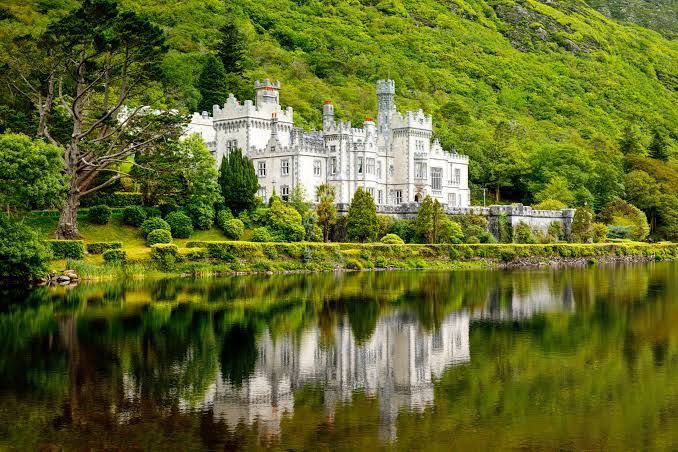 With only 5 million citizens, the Republic of Ireland was one of the nations most badly hit by the 2008 financial crisis. The island nation saw exponential growth in its per capita GDP, improved employment rates, and restored fiscal stability after enacting politically difficult measures including significantly cutting public sector wages and restructuring the banking sector.However, context is important. Ireland benefits multinational corporations far more than the average Irish individual, as it is one of the largest corporate tax havens in the world. In the middle of the 2010s, a number of significant US corporations—including Apple, Google, Microsoft, Meta, and Pfizer—moved their fiscal domicile to Ireland to benefit from the nation’s 12.5% corporate tax rate, which is among the lowest in the developed world. The Central Statistics Office stated in 2022 that the value added to the Irish economy was accounted for by these multinational firms to the tune of over 60%. If Ireland implemented the 15% minimum corporate tax rate that the OECD has advised and that many other countries have already implemented, it would lose its competitive advantage.Moreover, the OECD data indicates that while Irish families are undoubtedly in a better position now than they were a few years ago, the nation’s per-capita disposable income for households is still somewhat below the EU average. Most Irish people would likely disagree that they are the richest people in the world, given the stark economic inequality in Ireland (the top 20% earn around five times as much as the bottom 20%).1. Luxembourg
With only 5 million citizens, the Republic of Ireland was one of the nations most badly hit by the 2008 financial crisis. The island nation saw exponential growth in its per capita GDP, improved employment rates, and restored fiscal stability after enacting politically difficult measures including significantly cutting public sector wages and restructuring the banking sector.However, context is important. Ireland benefits multinational corporations far more than the average Irish individual, as it is one of the largest corporate tax havens in the world. In the middle of the 2010s, a number of significant US corporations—including Apple, Google, Microsoft, Meta, and Pfizer—moved their fiscal domicile to Ireland to benefit from the nation’s 12.5% corporate tax rate, which is among the lowest in the developed world. The Central Statistics Office stated in 2022 that the value added to the Irish economy was accounted for by these multinational firms to the tune of over 60%. If Ireland implemented the 15% minimum corporate tax rate that the OECD has advised and that many other countries have already implemented, it would lose its competitive advantage.Moreover, the OECD data indicates that while Irish families are undoubtedly in a better position now than they were a few years ago, the nation’s per-capita disposable income for households is still somewhat below the EU average. Most Irish people would likely disagree that they are the richest people in the world, given the stark economic inequality in Ireland (the top 20% earn around five times as much as the bottom 20%).1. Luxembourg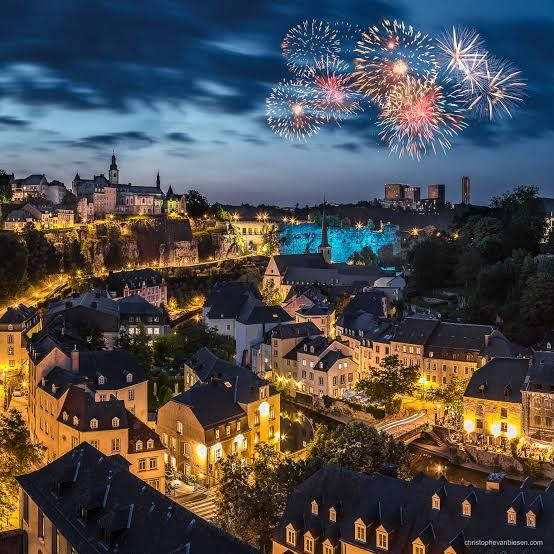 Luxembourg is worth visiting for its cuisine delicacies, cultural festivals, and stunning scenery. Alternatively, you might just open an offshore account with one of its banks and leave the nation forever. It would be a shame to do otherwise because tiny country of around 650,000 people, located in the center of Europe, has a lot to offer both visitors and residents. Luxembourg’s citizens enjoy the highest standard of life in the Eurozone because a significant portion of their money is used to provide them with better housing, healthcare, and education.Luxembourg’s economy may not have been significantly impacted by the global financial crisis or the EU and OECD’s push to abolish banking secrecy, but the coronavirus outbreak resulted in the closure of numerous firms and the loss of jobs for many employees. Nevertheless, the nation has fared better throughout the pandemic than the majority of its neighbors in Europe; in 2021, growth in the economy exceeded 7%, having recovered from a growth of -0.9% in 2020. Unfortunately, that recovery was short-lived as the economy only increased by 1.3% in 2022 and even shrank by 0.4% in the previous year as a result of rising interest rates, the conflict in Ukraine, and a general worsening of the economic situation in the Eurozone.
Luxembourg is worth visiting for its cuisine delicacies, cultural festivals, and stunning scenery. Alternatively, you might just open an offshore account with one of its banks and leave the nation forever. It would be a shame to do otherwise because tiny country of around 650,000 people, located in the center of Europe, has a lot to offer both visitors and residents. Luxembourg’s citizens enjoy the highest standard of life in the Eurozone because a significant portion of their money is used to provide them with better housing, healthcare, and education.Luxembourg’s economy may not have been significantly impacted by the global financial crisis or the EU and OECD’s push to abolish banking secrecy, but the coronavirus outbreak resulted in the closure of numerous firms and the loss of jobs for many employees. Nevertheless, the nation has fared better throughout the pandemic than the majority of its neighbors in Europe; in 2021, growth in the economy exceeded 7%, having recovered from a growth of -0.9% in 2020. Unfortunately, that recovery was short-lived as the economy only increased by 1.3% in 2022 and even shrank by 0.4% in the previous year as a result of rising interest rates, the conflict in Ukraine, and a general worsening of the economic situation in the Eurozone.

